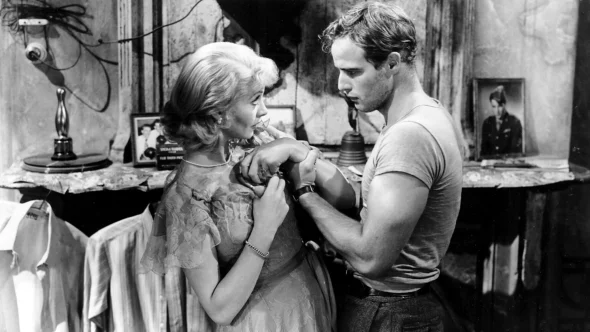
"Horror has historically been a place for the marginalized. For the fringe. Often, for people thinking outside the box," says the writer and director Stewart Thorndike. "It makes sense that horror would be fertile ground for queer people."
Thorndike made her directorial debut with 2014's Lyle, about a mother whose grief over the death of her toddler curdles into paranoia when she starts to suspect that her neighbors are part of a satanic cult. Upon its release, the movie was hailed as "a lesbian Rosemary's Baby."
"When Lyle came out, I was shocked that being a female making horror was such a thing," Thorndike reflects. "And just as shocking to me was the conversation about it being queer. I hadn't thought of it as being something new. I was just reflecting my world and feelings and life. I'm thrilled that things have changed so much. More and more people are reinventing horror and different voices are joining the horror conversation. I think this genre has changed in so many radical and important ways this past decade."
Her latest is Bad Things. In it, Ruthie (played by Gayle Rankin) inherits her family's abandoned hotel and invites friends (Rad Pereira, Annabelle Dexter-Jones and Hari Nef) to spend the weekend there. Inside the walls of the Comley Hotel, they encounter ghosts of guests past, a chainsaw-wielding killer, and Ruthie's ominous mother. As such, Bad Things has been likened to a queer The Shining.
"I think I have a subconscious compulsion to reframe certain epic, extra-masculine films with women," Thorndike says of the comparisons to Stanley Kubrick's modern horror masterpiece. "I never set out to direct a film that sampled The Shining. It just sort of oozed out. But I sure can't deny and don't want to deny that the parallels are absolutely there. However, the ideas that I'm juggling and trying to understand couldn't be more different."
Lyle and Bad Things make up the first two installments in a planned trilogy about the power of motherhood. Lyle was about Thorndike's fear of being a mother, and Bad Things tries to reframe motherhood as "this epic presence we can't escape."
"The third in the trilogy, Daughter, is the most frightening to me," she teases. "The story is about a woman who tries to be the perfect mother and it all goes terribly wrong."
Below, Thorndike shares with A.frame five of the films that shaped her filmmaking sensibilities and that continue to inspire her to this day.

Directed by: Jules Dassin | Written by: Jules Dassin, Ruby Dee & Julian Mayfield
I only recently discovered this movie when I was living in Ithaca during COVID. I read about the writer Julian Mayfield, who was a Black activist and had lived for a while near where I was living. The story is about an uprising in Ohio after MLK was murdered. The second I started watching, I was blown away. It's glorious. The acting, the locations, the blocking, the shooting. Julian Mayfield is also the protagonist of the film, Tank, and breaks your heart in every frame.
There is so much pain and beauty and cinematic construction in every shot. Huge crowds, and epic locations, and beautiful choreographed movements. It has everything I want in a film, with this pounding momentum and wrenching story and performances. I just love how the locations, camera work and blocking amplify this painful story. I love how epic it is in scope and going for it with wild locations. All of this underlines the tragedy of this story. The blocking is outstanding.

Directed by: Elia Kazan | Written by: Tennessee Williams
I've never made a film where I'm not thinking of Kazan. Every scene is like its own film with a clear beginning, middle, and end that is littered with surprises. I also think there is a haze of sexuality in it all. And the feeling in the blocking, that while it's constructed with such beautiful precision, there is still something wild and free about to happen. Someone slides down a wall or slides down a banister or slides off a glove. Of course, Marlon is epic in the Stella scene, but it's Kim Hunter coming down the stairs — succumbing to all that brute sexuality — that gets me in my gut every time. Her expression.

Written and Directed by: Kamal Amrohi
This film has the most epic ending that you never see coming but is also absolutely coming. The beauty of this film is in every frame. The sets. The blocking. But really. it's the ending I come back to every time I make something. For me, it's as good as Beau Travail's epic ending.

Directed by: William Wyler | Written by: Ruth Goetz and Augustus Goetz
I love William Wyler, and this is a film I watch over and over again. I think it is the relentless unsparing escalation of the story that I worship. Matched with the camerawork. The performances are wicked. The storytelling is so streamlined. It's so lean and so unsparring. It's perfection. And so dark, which I love.

Written and Directed by: Barbara Loden
This movie is magic. This film feels like nothing else. This film feels like it's made by a woman. And when I watch it I get a little mad. There should be troves of films we don't have by women and other groups of people who have been squeezed out of this medium. The combination of a bank robbery and everydayness feels wild. The cinematography. Her performance. The aimless sadness is also beautiful. All epic.







